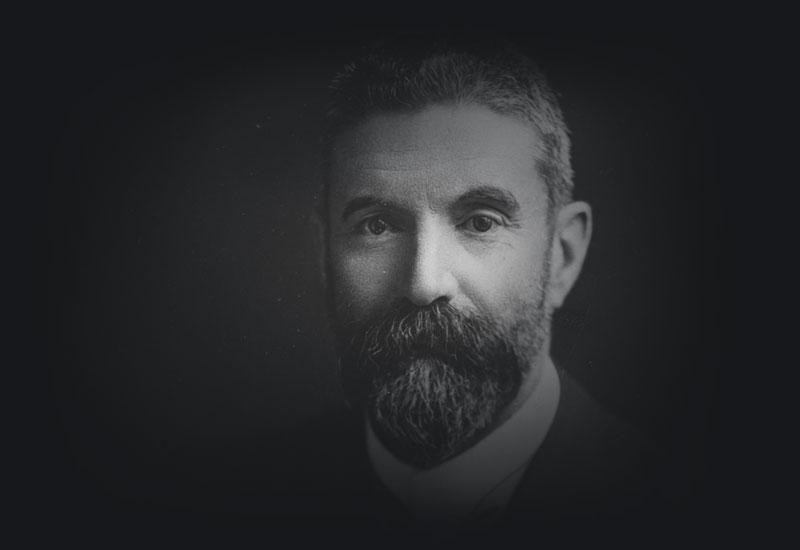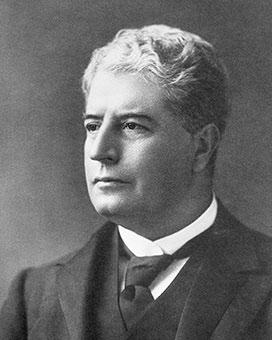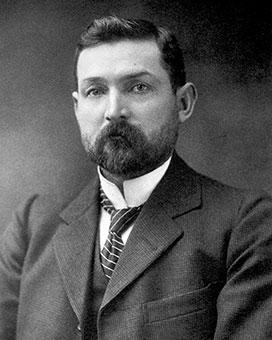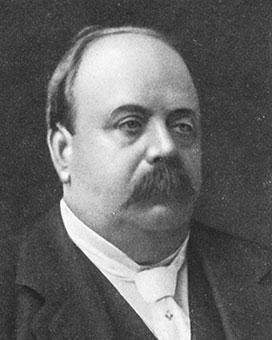On this page
1900 to 1909
29 Mar 1901: First elected to federal Parliament
Deakin was elected as Member of Parliament for the seat of Ballaarat (VIC), in the first federal election.
24 Sep 1903: 2nd Prime Minister
When Edmund Barton resigned to accept an appointment as a Justice of the High Court, his friend and deputy Deakin succeeded him as prime minister.
6 Oct 1903: High Court established
Sir Samuel Griffith, Sir Edmund Barton and Richard O'Connor met for the first sitting of the High Court of Australia. In 1906, HB Higgins and Sir Isaac Isaacs joined them when the Deakin government increased the bench to 5. In 1913, the Fisher government gave the Court its present size of 7 judges.
16 Dec 1903: 2nd federal election
Deakin's Protectionists won the most seats but not a clear majority. Deakin formed a minority government with the support of Watson's Labor Party.
16 Dec 1903: Women stand and vote
The 1903 federal election was the 1st where women had the same rights as men to stand for parliament and to vote. Vida Goldstein, Nellie Martel and Mary Ann Bentley stood for the Senate. Selina Siggins stood for the seat of Dalley in the House of Representatives.
21 Jan 1904: 3rd Governor-General
Lord Northcote served as Governor-General until 9 September 1908.
2 Mar 1904: Opening of 2nd parliament
The 2nd parliament opened and closed with the same prime minister, but there were 4 changes of government and 3 different prime ministers between the 1903 and 1906 federal elections. This was the most unstable of Australia's 40 parliaments.
27 Apr 1904: Lost office
Labor's support for Deakin's minority government broke down over a proposed amendment to the Conciliation and Arbitration Bill. Deakin resigned as prime minister. Labor leader, Chris Watson is sworn in as prime minister.
6 Jul 1905: Prime minister for the 2nd time
Deakin became prime minister for the 2nd time, when the Reid government lost majority support in the House of Representatives.
18 Oct 1905: Wireless communications
Enactment of the Wireless Telegraphy Act gave the Postmaster-General responsibility for radio communications. Signals had first been sent across the Atlantic, from England to the United States, 4 years before. In 1905, radio signals were successfully sent across Bass Strait.
18 Jun 1906: Counting the Commonwealth
GH Knibbs was appointed head of the new Commonwealth Bureau of Census and Statistics. Some 4.5 million people were counted in the first census on 3 April 1911. Indigenous people were 1st included officially in the federal census in 1971 when the population was 12.8 million.
1 Sep 1906: 1st referendum
At the 3rd federal election, voters approved a change to Section 13 of the Constitution. This minor change adjusted the timing of Senate elections and the date senators would start their terms of office. This was the 1st of 8 alterations to the Australian Constitution in its 1st century.
12 Dec 1906: 3rd federal election
Despite winning the least seats of the 3 major parties, Deakin's Protectionists remained in office, forming a minority government with the support of the Labor Party under Andrew Fisher.
2 Jul 1907: Trunk calls begin
The dual-line cables necessary for telephone conversations first linked the Sydney and Melbourne exchanges. The Postmaster-General's Department completed the main trunk lines to Adelaide in 1914, to Brisbane in 1923 and to Perth in 1930. Tasmania was connected by submarine coaxial cable in 1936.
23 Oct 1907: Women's work on show
Some 15,000 people crowded Melbourne's Exhibition Building for the opening of the Australian Exhibition of Women's Work by Lady Northcote. Pattie Deakin ran the model creche. The 5-week exhibition showcased the work of musicians, artists and craftswomen.
8 Nov 1907: The Harvester case
Justice Higgins established the principle of a male basic wage in a Conciliation and Arbitration Court case. This was the only decision under a 'new protection' law that tied excise duties to wages. The High Court declared the law unconstitutional 1 year later.
16 May 1908: Writers fund begins
The Commonwealth Literary Fund was established as a pension fund for writers in poverty. In 1939, the Menzies government, at the urging of James Scullin, transformed it into a grants scheme for writers. The Fund and its Advisory Board ceased in 1973 when they were absorbed into the new Australia Council.
20 Aug 1908: 'Great White Fleet'
In the 1st United States naval visit to Australia, a fleet of white-painted ships steamed into Sydney Harbour. Their 4-month tour of Australian ports was part of a lengthy promotional voyage arranged by President Theodore Roosevelt.
9 Sep 1908: 4th Governor-General
Lord Dudley served as Governor-General to 31 July 1911. Lord Chelmsford was acting Governor-General from 21 January 1909 to 27 January 1910.
13 Nov 1908: Lost office
The Labor Party withdrew support for Deakin's minority government due to dissatisfaction with the 'New Protection' legislation. Deakin resigned, and Labor leader Andrew Fisher was sworn in as prime minister.
2 Jun 1909: Prime Minister for the 3rd time
Deakin became prime minister for the 3rd time after negotiating the 'fusion' of members from the 3 non-Labor political groups in the House of Representatives into the new Commonwealth Liberal Party. This was the 1st federal majority government in Australian history.
13 Dec 1909: Military training
The Commonwealth Defence Act became law. It provided for the compulsory military training scheme that began on 1 January 1911, and for the establishment of the Royal Military College at Duntroon, Canberra, on 27 June 1911.
13 Dec 1909: High commissioner
The Act establishing a High Commission in London became law. George Reid became Australia's first High Commissioner 1 month later. During his term, the building of Australia House started. Reid was also closely involved in ordering the vessels for Australia's first naval fleet.
1910 to 1919
13 Apr 1910: 4th federal election
Deakin's Commonwealth Liberal Party was defeated by the Labor Party under Andrew Fisher.
13 Apr 1910: Referendum
Voters at the 4th federal election approved the 2nd alteration to the Constitution. This was a minor change to Commonwealth-State arrangements for public debts under Section 105. A second proposal, to amend Section 87 (the 'Braddon Clause'), was not carried.
29 Apr 1910: Left office
Following his government's electoral defeat, Deakin's term as prime minister ended on 29 April 1910. Deakin had served as prime minister for a total of 4 years and 10 months, the longest time served by any of the first 6 prime ministers to 1915.
31 May 1913: Left Parliament
Deakin retired from politics when Parliament was dissolved in May 1913, and Joseph Cook became prime minister after the general election on 31 May 1913.
7 Oct 1919: Death
Deakin suffered a stroke in September 1919 and died on 7 October.





